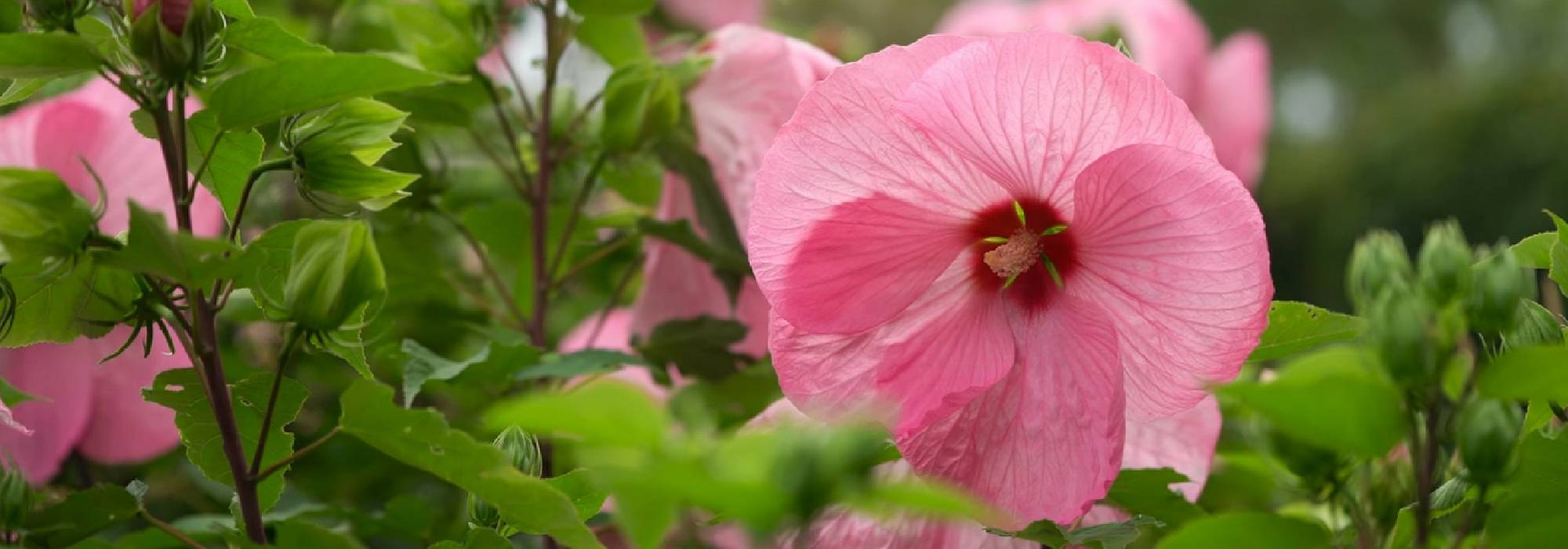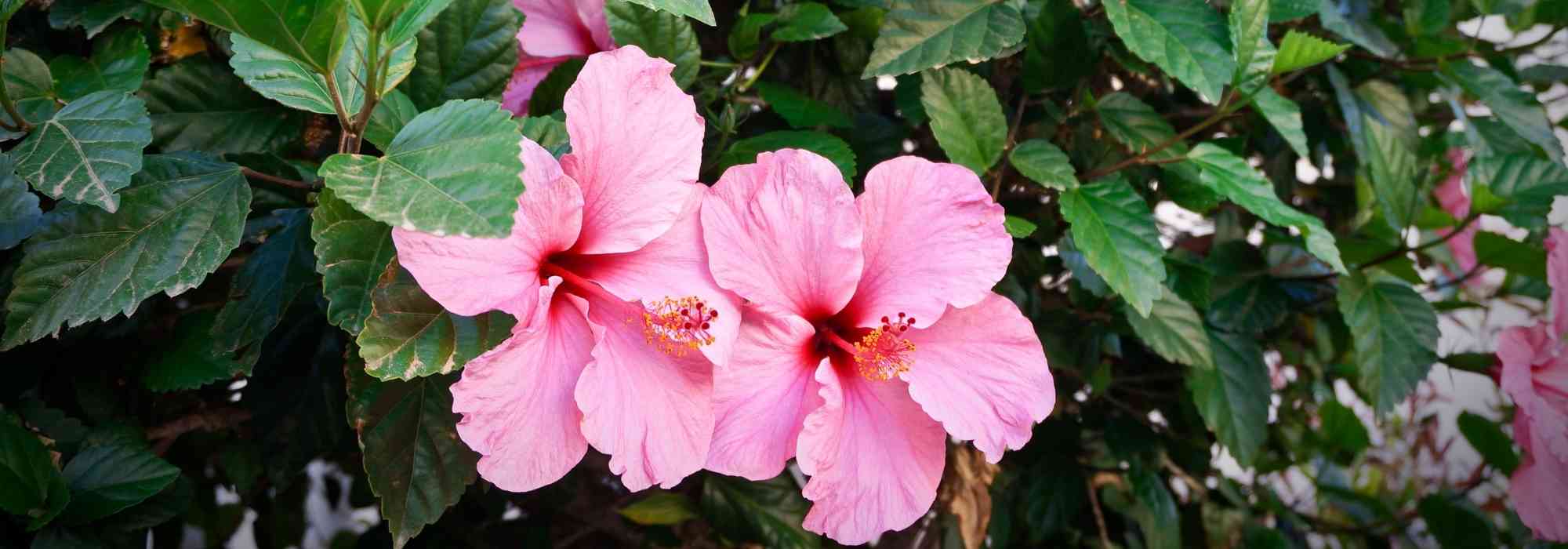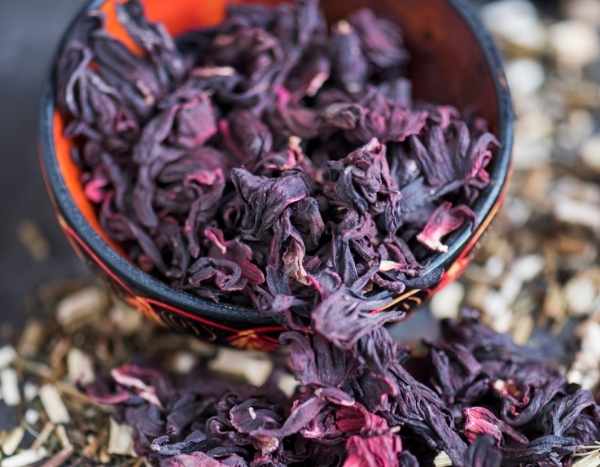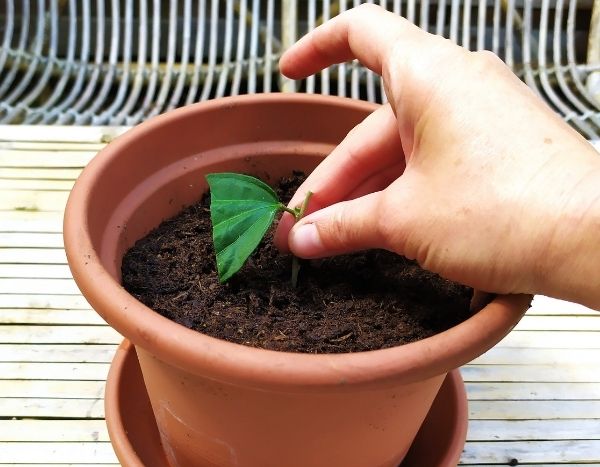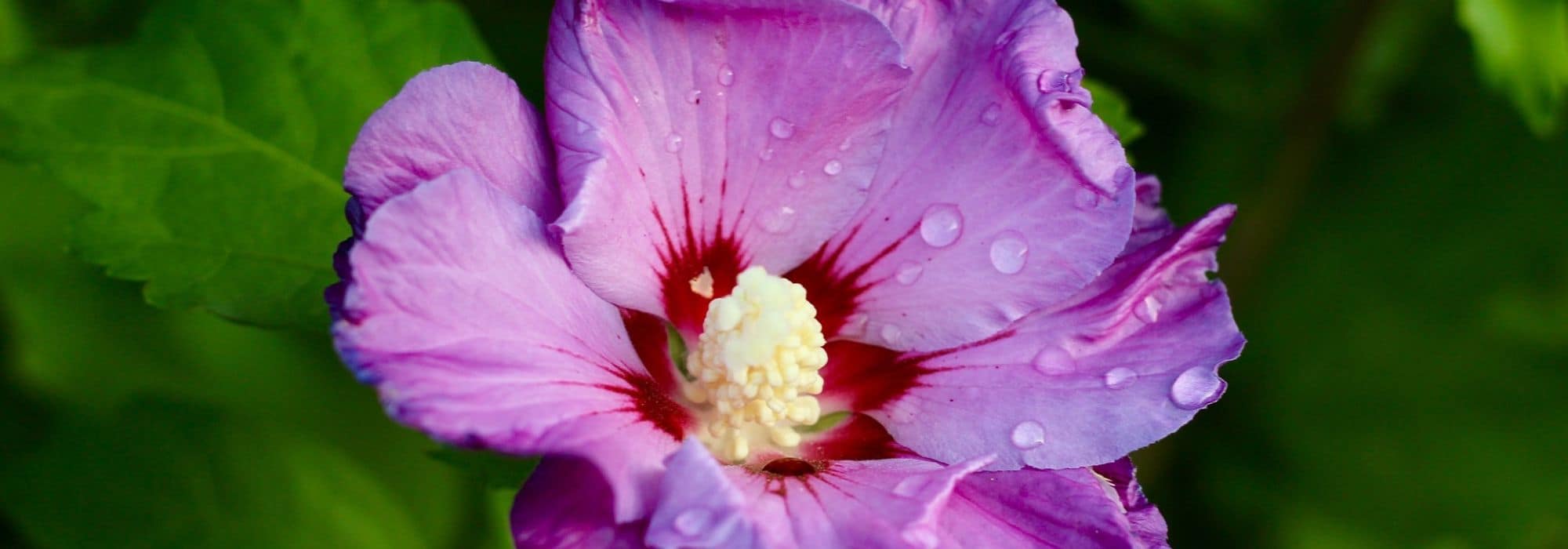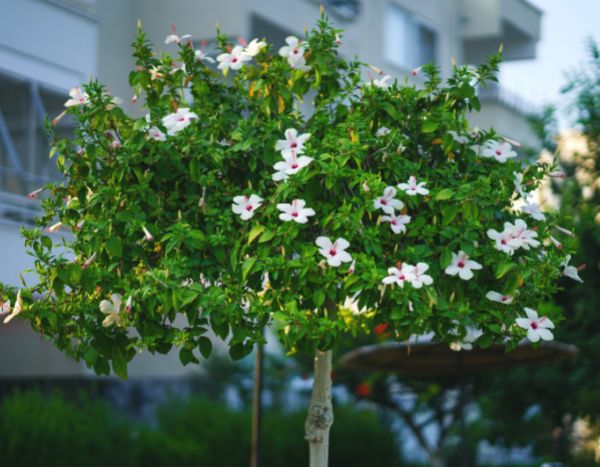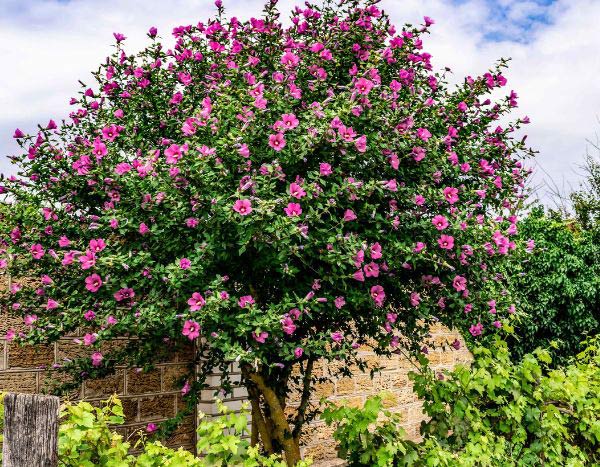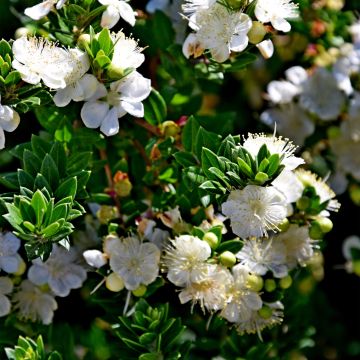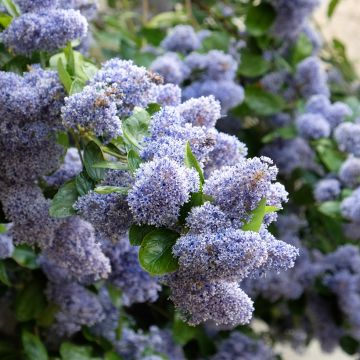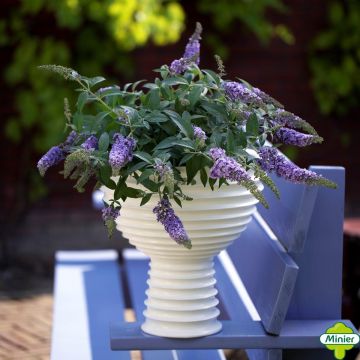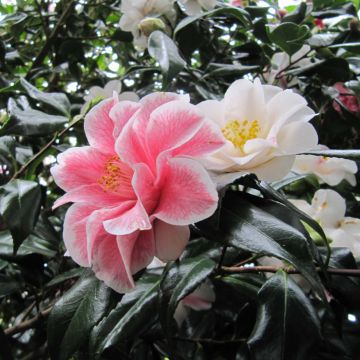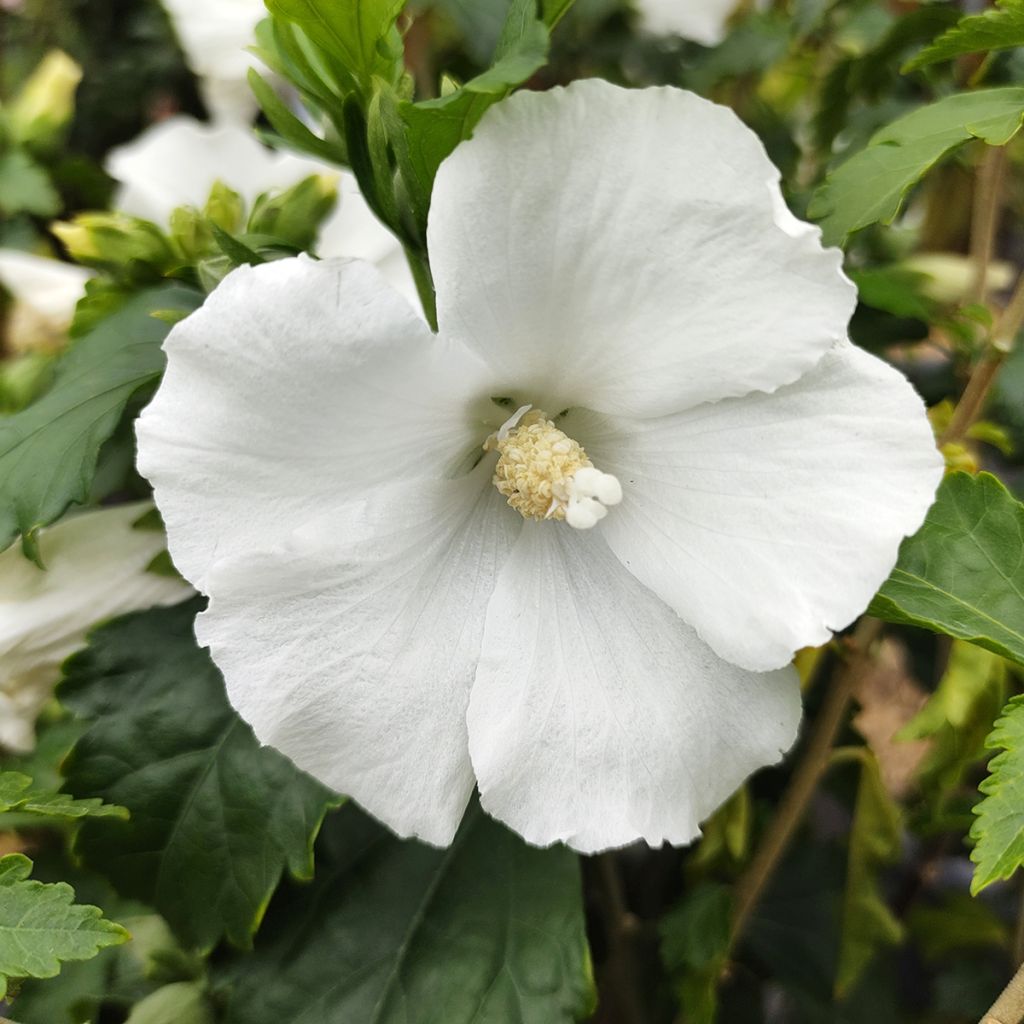

Hibiscus syriacus Eléonore - Rose of Sharon
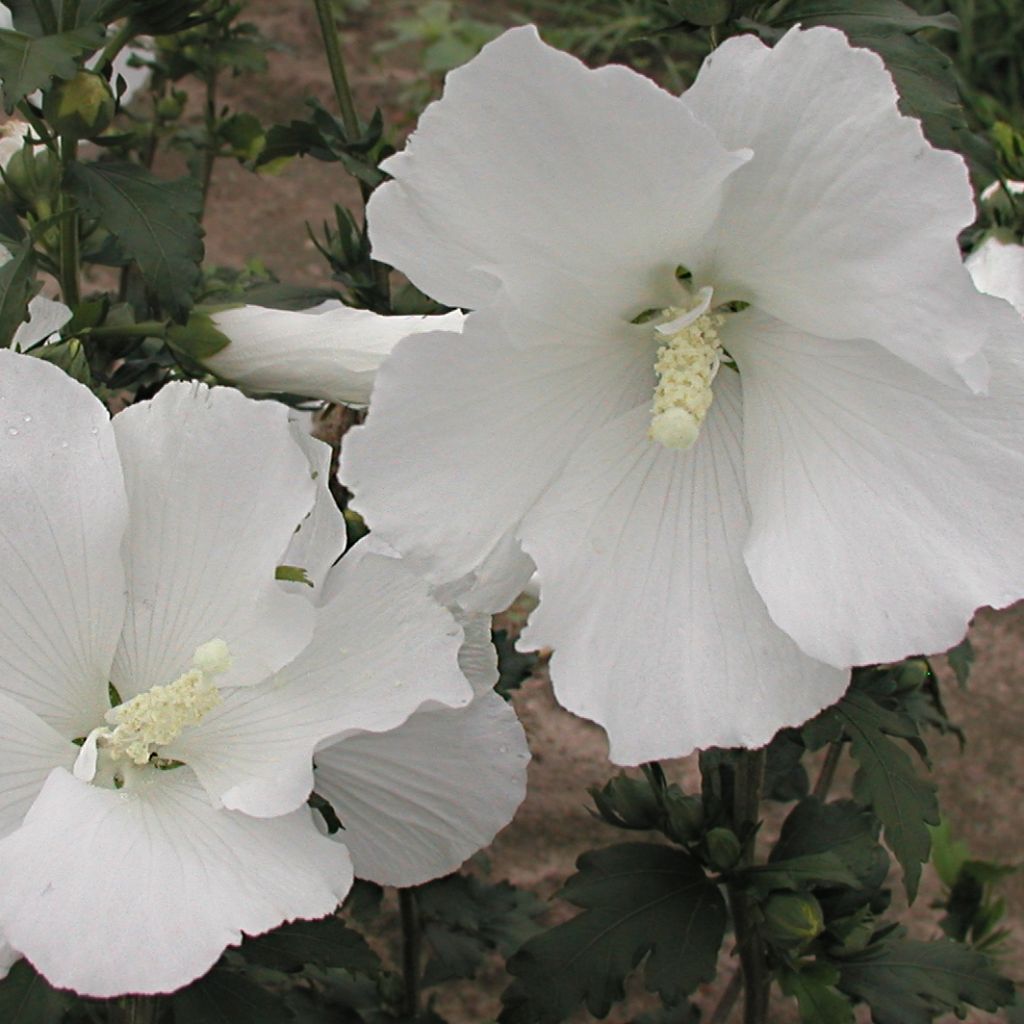

Hibiscus syriacus Eléonore - Rose of Sharon
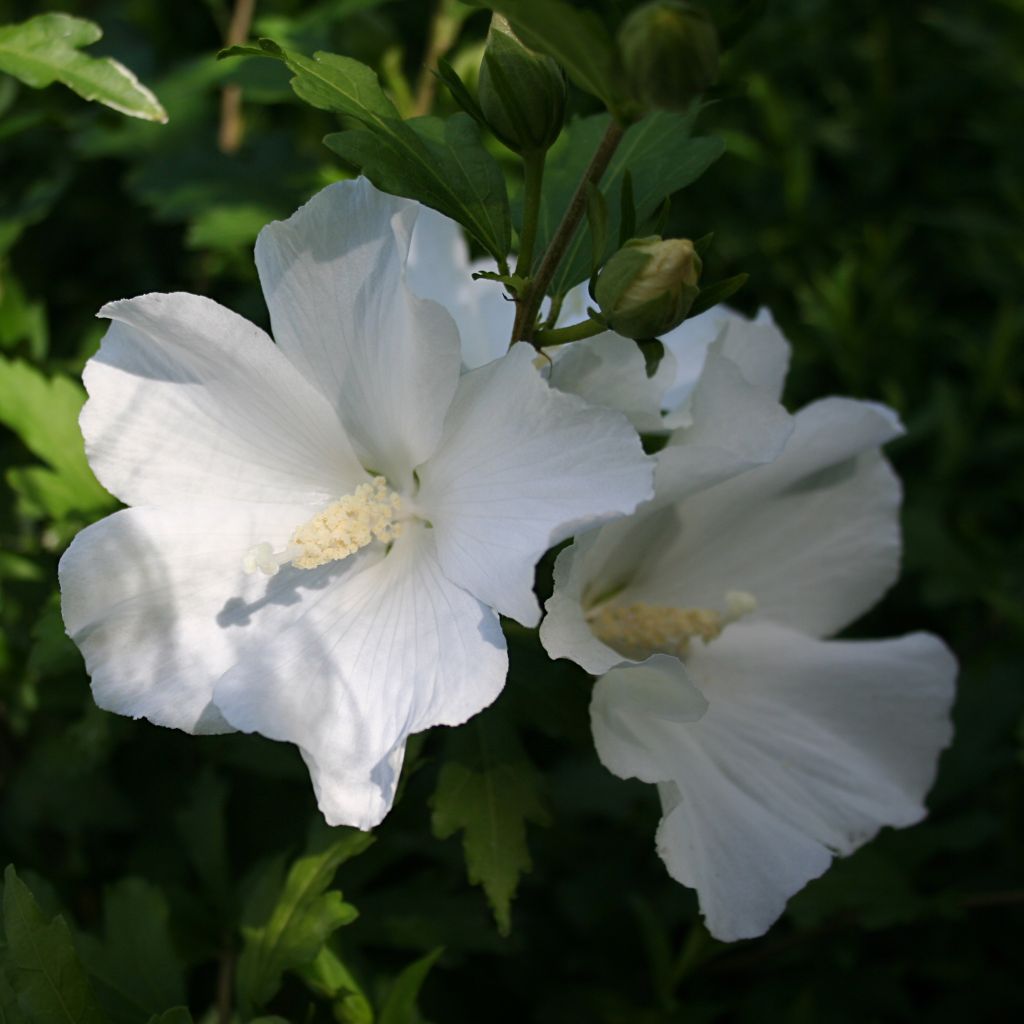

Hibiscus syriacus Eléonore - Rose of Sharon
Hibiscus syriacus Eléonore - Rose of Sharon
Hibiscus syriacus Eléonore
Common Hibiscus, Rose of Sharon, Syrian ketmia, St Joseph's rod, Garden Hibiscus
After an initial 'defective' young plant and excellent management by PdF, the new young plant is completely satisfactory and, despite being planted late, is currently producing beautiful flowers.
Oli, 24/08/2023
Special offer!
Receive a €20 voucher for any order over €90 (excluding delivery costs, credit notes, and plastic-free options)!
1- Add your favorite plants to your cart.
2- Once you have reached €90, confirm your order (you can even choose the delivery date!).
3- As soon as your order is shipped, you will receive an email containing your voucher code, valid for 3 months (90 days).
Your voucher is unique and can only be used once, for any order with a minimum value of €20, excluding delivery costs.
Can be combined with other current offers, non-divisible and non-refundable.
Home or relay delivery (depending on size and destination)
Schedule delivery date,
and select date in basket
This plant carries a 24 months recovery warranty
More information
We guarantee the quality of our plants for a full growing cycle, and will replace at our expense any plant that fails to recover under normal climatic and planting conditions.

Would this plant suit my garden?
Set up your Plantfit profile →
Description
Hibiscus syriacus 'Éléonore' is a recent variety with good vigour compared to other white-flowered varieties. This beautiful variety is also very floriferous, offering large single, pure white flowers from July to September. If the weather is mild, the flowers will continue blooming into autumn. This bush is not afraid of cold, limestone, or dry soils once well established. Easy to plant with other shrubs to create a flowery hedge or a border, it is really easy to grow in the sun, in all regions.
Hibiscus syriacus, sometimes called Garden Hibiscus, is a hardy deciduous shrub in our climates, but evergreen in warm climates. It belongs to the Malvaceae family, just like hollyhocks and marshmallows. It is native to temperate regions of Asia (China, India), and has given rise to numerous cultivars including 'Éléonore', which stands out for its healthy and vigorous growth, and abundant single flower blooms. 'Éléonore' forms an upright bush 2 m (6.6 ft) tall and 1.50 m (4.9 ft) wide, with erect branches. It is of fairly rapid growth. It blooms for a long time if the weather remains mild, and its ephemeral flowers that fade in 24 hours are continuously renewed until October. They are 10 cm (3.9 in) wide, and composed of pure white petals arranged around a white throat. Its foliage is very healthy, bright green, slightly shiny, and turns yellow in autumn. The leaves are alternate, simple, heart-shaped and lobed; their edge is toothed and undulate.
'Éléonore' appreciates bright, warm exposures, and is satisfied with a light shade in warmer regions. This hibiscus requires no maintenance, and grows slowly but steadily in the first few years. Shelter it from strong winds and plant in soil that remains slightly moist until the end of summer. This ornamental variety of great value can be used in a medium-sized hedge, alongside other hibiscus with different colours and buddleias. It works well as a standalone plant or at the back of a perennial border composed of dwarf conifers, asters, or shrubby salvias for example. Its modest size allows it to be grown in a large pot and in a nutrient-rich substrate, so you can fully enjoy its flowering on a terrace or balcony.
Hibiscus syriacus Eléonore - Rose of Sharon in pictures
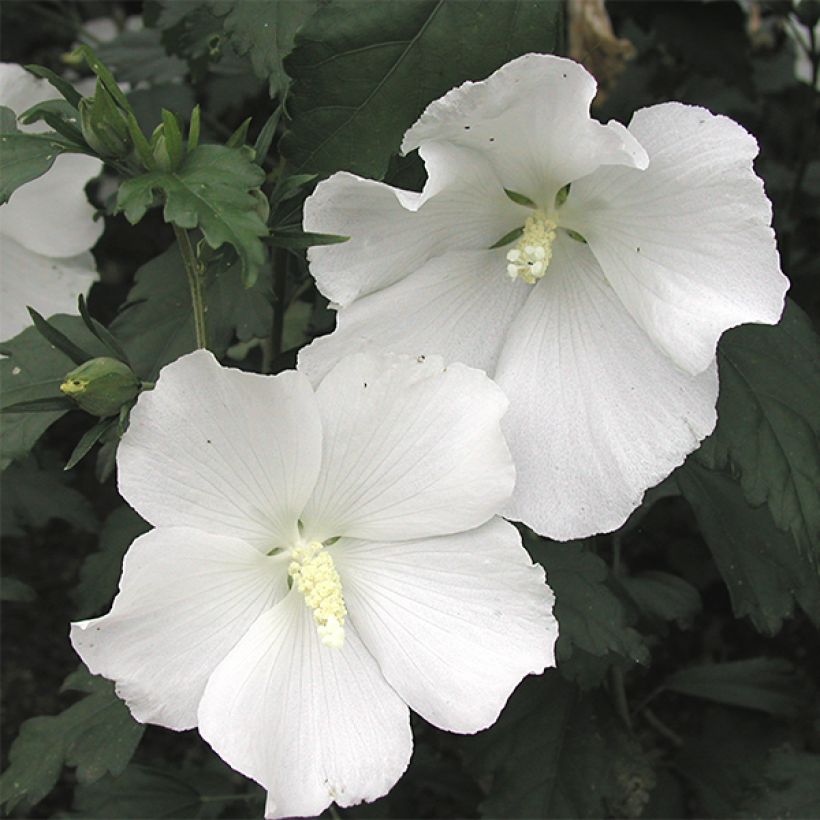



Plant habit
Flowering
Foliage
Botanical data
Hibiscus
syriacus
Eléonore
Malvaceae
Common Hibiscus, Rose of Sharon, Syrian ketmia, St Joseph's rod, Garden Hibiscus
Cultivar or hybrid
Planting and care
Plant in spring or autumn, in a sunny position, or in partial shade in warmer regions. Choose well-drained, loose, but fertile soil. Dig a nice deep planting hole and add some compost and sand to your garden soil to improve its quality if necessary. Water generously after planting. Don't worry if the vegetation doesn't start before May; it's completely normal for this bush.
While hibiscus can tolerate heat and occasionally dry soils, they are more beautiful and more floriferous in a soil that retains moisture in summer. Mulch the base of these bushes generously if needed.
Planting period
Intended location
Care
Planting & care advice
-
, onOrder confirmed
Reply from on Promesse de fleurs
Similar products
Haven't found what you were looking for?
Hardiness is the lowest winter temperature a plant can endure without suffering serious damage or even dying. However, hardiness is affected by location (a sheltered area, such as a patio), protection (winter cover) and soil type (hardiness is improved by well-drained soil).

Photo Sharing Terms & Conditions
In order to encourage gardeners to interact and share their experiences, Promesse de fleurs offers various media enabling content to be uploaded onto its Site - in particular via the ‘Photo sharing’ module.
The User agrees to refrain from:
- Posting any content that is illegal, prejudicial, insulting, racist, inciteful to hatred, revisionist, contrary to public decency, that infringes on privacy or on the privacy rights of third parties, in particular the publicity rights of persons and goods, intellectual property rights, or the right to privacy.
- Submitting content on behalf of a third party;
- Impersonate the identity of a third party and/or publish any personal information about a third party;
In general, the User undertakes to refrain from any unethical behaviour.
All Content (in particular text, comments, files, images, photos, videos, creative works, etc.), which may be subject to property or intellectual property rights, image or other private rights, shall remain the property of the User, subject to the limited rights granted by the terms of the licence granted by Promesse de fleurs as stated below. Users are at liberty to publish or not to publish such Content on the Site, notably via the ‘Photo Sharing’ facility, and accept that this Content shall be made public and freely accessible, notably on the Internet.
Users further acknowledge, undertake to have ,and guarantee that they hold all necessary rights and permissions to publish such material on the Site, in particular with regard to the legislation in force pertaining to any privacy, property, intellectual property, image, or contractual rights, or rights of any other nature. By publishing such Content on the Site, Users acknowledge accepting full liability as publishers of the Content within the meaning of the law, and grant Promesse de fleurs, free of charge, an inclusive, worldwide licence for the said Content for the entire duration of its publication, including all reproduction, representation, up/downloading, displaying, performing, transmission, and storage rights.
Users also grant permission for their name to be linked to the Content and accept that this link may not always be made available.
By engaging in posting material, Users consent to their Content becoming automatically accessible on the Internet, in particular on other sites and/or blogs and/or web pages of the Promesse de fleurs site, including in particular social pages and the Promesse de fleurs catalogue.
Users may secure the removal of entrusted content free of charge by issuing a simple request via our contact form.
The flowering period indicated on our website applies to countries and regions located in USDA zone 8 (France, the United Kingdom, Ireland, the Netherlands, etc.)
It will vary according to where you live:
- In zones 9 to 10 (Italy, Spain, Greece, etc.), flowering will occur about 2 to 4 weeks earlier.
- In zones 6 to 7 (Germany, Poland, Slovenia, and lower mountainous regions), flowering will be delayed by 2 to 3 weeks.
- In zone 5 (Central Europe, Scandinavia), blooming will be delayed by 3 to 5 weeks.
In temperate climates, pruning of spring-flowering shrubs (forsythia, spireas, etc.) should be done just after flowering.
Pruning of summer-flowering shrubs (Indian Lilac, Perovskia, etc.) can be done in winter or spring.
In cold regions as well as with frost-sensitive plants, avoid pruning too early when severe frosts may still occur.
The planting period indicated on our website applies to countries and regions located in USDA zone 8 (France, United Kingdom, Ireland, Netherlands).
It will vary according to where you live:
- In Mediterranean zones (Marseille, Madrid, Milan, etc.), autumn and winter are the best planting periods.
- In continental zones (Strasbourg, Munich, Vienna, etc.), delay planting by 2 to 3 weeks in spring and bring it forward by 2 to 4 weeks in autumn.
- In mountainous regions (the Alps, Pyrenees, Carpathians, etc.), it is best to plant in late spring (May-June) or late summer (August-September).
The harvesting period indicated on our website applies to countries and regions in USDA zone 8 (France, England, Ireland, the Netherlands).
In colder areas (Scandinavia, Poland, Austria...) fruit and vegetable harvests are likely to be delayed by 3-4 weeks.
In warmer areas (Italy, Spain, Greece, etc.), harvesting will probably take place earlier, depending on weather conditions.
The sowing periods indicated on our website apply to countries and regions within USDA Zone 8 (France, UK, Ireland, Netherlands).
In colder areas (Scandinavia, Poland, Austria...), delay any outdoor sowing by 3-4 weeks, or sow under glass.
In warmer climes (Italy, Spain, Greece, etc.), bring outdoor sowing forward by a few weeks.






























